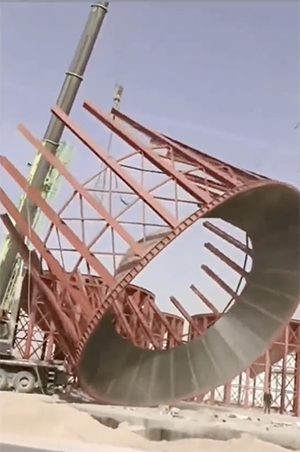 Authored by Ed Davidson and originally posted on LinkedIn:
Authored by Ed Davidson and originally posted on LinkedIn:
Yep...
There ya have it folks...
Gravity wins again!
Failing to check for simple things like the capacity of a shackle or the weight of the load are common, but preventable mistakes.
Preventing mistakes—especially the common ones—is an important step in keeping your employees and facility safe.
Nine of the most common rigging problems seen during consultations, site visits, or inspections are:
1. Weight of the load is unknown
In order to properly lift an object to the working load limit (WLL) of the rigging equipment being used, you must know its weight.
2. Not inspecting gear / not knowing what to inspect for
Failure to regularly inspect rigging equipment for damage, defects, or deformities can lead to equipment failure and a failed lift.
3. Capacity of slings / hardware is unknown
With a few exceptions, all rigging equipment and hardware must have the WLL clearly labeled on the device. A rigger must not use a device if the capacity is unlabeled/unknown
4. Using improperly fabricated below-the-hook devices or modified equipment
It is not uncommon for our Lifting Specialists and Inspectors to come across homemade, modified, or makeshift devices on a site visit.
5. Not using the correct sling, device, or hitch for the application
Rigging is all about planning your lift using the available equipment—slings, hardware, etc.—to make the safest, most efficient lift
6. Not using sling protection
All lifting slings need to be protected when making contact with corners, protrusions, edges, etc. Any corner must be protected against if it will make contact with a sling. Synthetic slings—web slings and roundslings— should never be used without added corner and edge protection.
7. Not understanding the structural integrity of the load
Before lifting a load, it is important to ensure that the load itself is structurally sound.
8. Failure to maintain load control
There are many factors for the rigger to consider when it comes to load control. Could the wind cause the lift to go awry? Will the sling and hitch properly support and distribute the weight of the load?
9. Failure to consult rigging charts
As all riggers should know, the WLL of a sling is directly dependent upon the sling hitch used in the lift, along with understanding the angle the sling is operating at.
Happy New Year y'all, and if you want to contribute to my grandson's cause it would be greatly appreciated.
I have included the #gofundme link here: https://gofund.me/f976d125
#paypal email is: Edward Davidson ewdjr7@gmail.com @EDavidson007
#cashapp: https://lnkd.in/gi56HwpW
#venmo is : Ed Davidson ewdjr7@gmail.com @Ed-Davidson-6
GiveSendGo: https://lnkd.in/gKUB9h6i
#zelle: ewdjr7@gmail.com
** SEE THE VIDEO IN THE EMBEDDED POST BELOW. **


